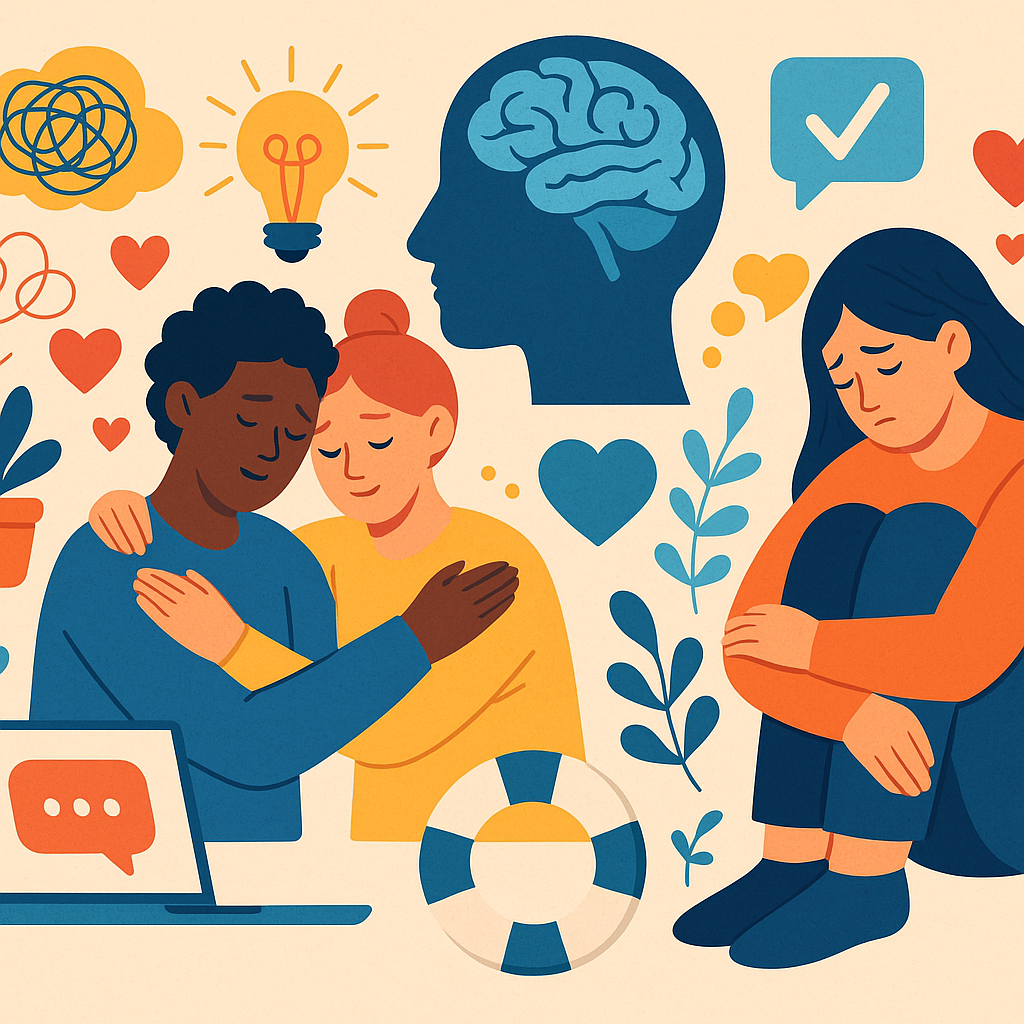In 2025, mental health awareness has taken center stage like never before. With rising stress levels, social isolation, and economic pressures, understanding the early signs of mental health struggles and knowing how to support ourselves and others has become a societal imperative. This guide explores emerging trends, practical signs to watch for, and real-world strategies that work—based on data, not just dialogue.

Recognizing the Red Flags: Key Signs of Mental Health Issues
Early detection remains the most effective form of mental health intervention. When left unaddressed, minor emotional distress can snowball into severe conditions such as anxiety disorders or depression.
Warning Signs You Shouldn’t Ignore:
- Persistent sadness or mood swings: More than just a bad day—this is consistent emotional turbulence lasting for weeks.
- Social withdrawal: Individuals pulling away from friends, family, or once-loved activities may be struggling internally.
- Irregular sleep and appetite: Drastic changes in sleep patterns or eating habits are classic symptoms.
- Fatigue and low energy: Feeling constantly drained, even after rest.
- Feelings of hopelessness or worthlessness: These thoughts can spiral and lead to suicidal ideation if left unchecked.
According to the National Institute of Mental Health (2024), recognizing these signs promptly can significantly improve recovery outcomes (National Institute of Mental Health, 2024).
2025’s Game-Changers in Mental Health Awareness
1. 24/7 Digital Therapy Platforms
The digital mental health market is booming, and for good reason. Platforms like BetterHelp and Talkspace offer chat, video, and audio therapy—anytime, anywhere. The rise in late-night usage (over 80% of sessions happen between 7 PM and 5 AM) illustrates the shift in demand toward always-available support systems (Journal of Medical Internet Research, 2025).
Apps now include AI screening tools, mental health journaling features, and even crisis management bots that escalate cases to professionals instantly.
2. Mental Health in the Workplace
Employers are becoming proactive, implementing mental health days, wellness budgets, and confidential counseling services. Companies with robust mental health programs report up to 40% improvement in employee retention and morale (NAMI, 2025).
Despite this progress, the 2025 NAMI Workplace Mental Health Poll found that over 60% of employees still fear stigma, highlighting the need for deeper culture change.
3. Youth-Centric Mental Health Literacy
Schools have begun embedding mental health education into their core curriculum. Students now learn coping mechanisms, emotional intelligence, and stress reduction techniques alongside math and science. This integration is vital, as teens report some of the highest rates of anxiety and depression.
The Mental Health Foundation reports that early mental health education significantly decreases school dropout rates and improves peer relationships (Mental Health Foundation, 2025).
Support Strategies That Work in 2025
Understanding the problem is only the first step. Here’s how to support mental wellness—both your own and others’.
A. Personal Mental Health Toolkit
- Regular Check-ins: Use mood-tracking apps like Daylio to log your emotions.
- Exercise: Even 20 minutes of walking a day can reduce anxiety and depressive symptoms.
- Digital Detox: Limit social media usage to prevent comparison and digital fatigue.
- Meditation and Mindfulness: Guided sessions on apps like Headspace have shown to reduce cortisol (stress hormone) levels.
B. Community and Social Support
- Support Groups: Peer-led groups offer a safe space for sharing and validation.
- Mental Health First Aid: Training programs that teach you how to support someone experiencing a mental health crisis.
- Open Dialogue: Talking openly about your struggles helps normalize seeking help.
When to Seek Professional Help
Some situations require the expertise of trained mental health professionals. Don’t wait if you or someone else is:
- Thinking about self-harm or suicide
- Experiencing hallucinations or delusions
- Unable to function in daily life
- Dealing with substance abuse in addition to mental health issues
You can find therapists via local directories, workplace programs, or telehealth services.
Innovations to Watch: AI and Wearables
Technology is not only making therapy accessible but also smarter. AI-driven tools can now predict depressive episodes through voice analysis and language patterns.
Smart wearables like mental health-focused Fitbit models track heart rate variability and sleep to warn users of potential emotional overload.
Some hospitals are already piloting these tools, showing up to 30% improvement in patient mental health outcomes when used as adjunct support.
Building a Resilient Culture Around Mental Health
It’s no longer enough to “talk about it.” We need systems, policies, and environments that support mental wellness.
- Government Action: Several states are rolling out universal mental health screenings in schools and public health systems.
- Corporate Policies: Big firms are offering incentives for regular mental health check-ups.
- Media Responsibility: More creators are being transparent about their mental health journeys, reducing stigma.
Conclusion: A New Chapter for Mental Health
In 2025, mental health awareness isn’t just a trend—it’s a necessity. From digital solutions to workplace initiatives and youth programs, society is finally catching up with the urgent need for mental health infrastructure.
We must stay vigilant about the signs, proactive about support, and vocal about our own experiences. The future of mental health is inclusive, accessible, and rooted in community—and it starts with awareness.
References:
- National Institute of Mental Health. (2024). Mental Health Topics. Available at: https://www.nimh.nih.gov/health/topics/index.shtml (Accessed: 22 May 2025).
- Journal of Medical Internet Research. (2025). ‘Digital media use and mental health’. Available at: https://en.wikipedia.org/wiki/Digital_media_use_and_mental_health (Accessed: 22 May 2025).
- National Alliance on Mental Illness. (2025). The 2025 NAMI Workplace Mental Health Poll. Available at: https://www.nami.org/support-education/publications-reports/survey-reports/the-2025-nami-workplace-mental-health-poll/ (Accessed: 22 May 2025).
- Mental Health Foundation. (2025). Mental Health Awareness Week Resources. Available at: https://www.mentalhealth.org.uk/our-work/public-engagement/mental-health-awareness-week/resources (Accessed: 22 May 2025).









